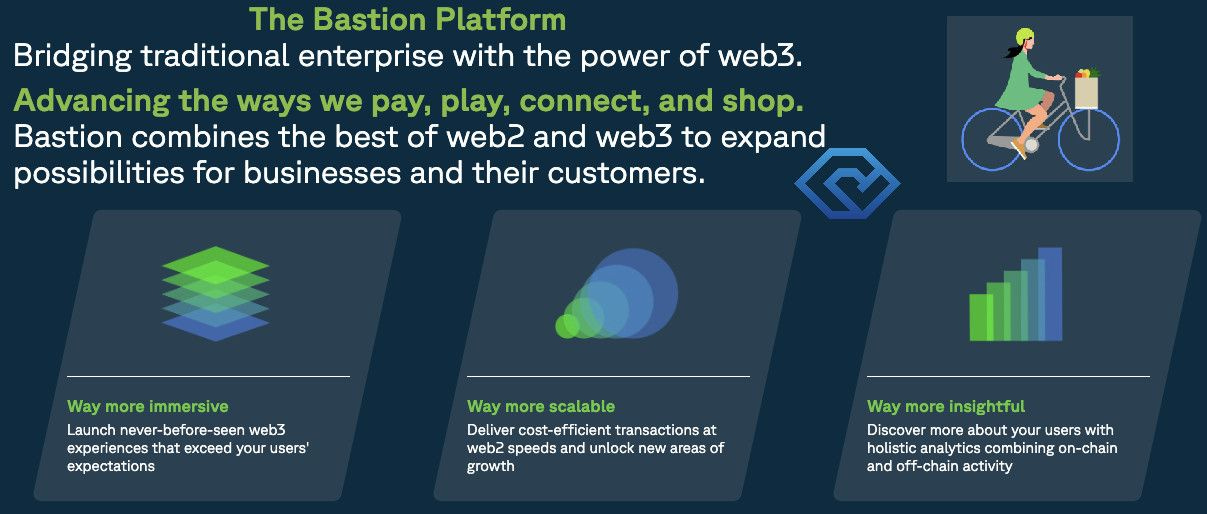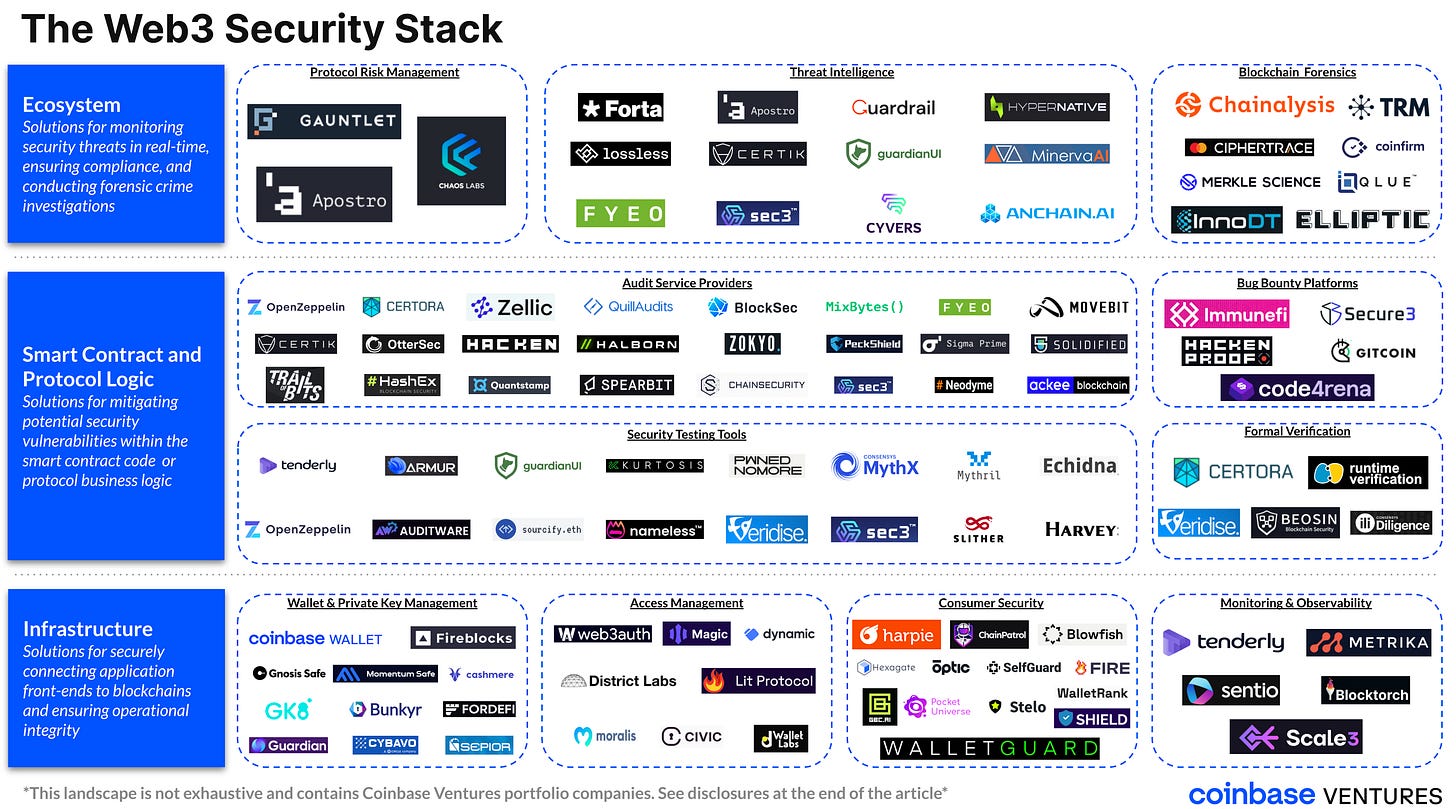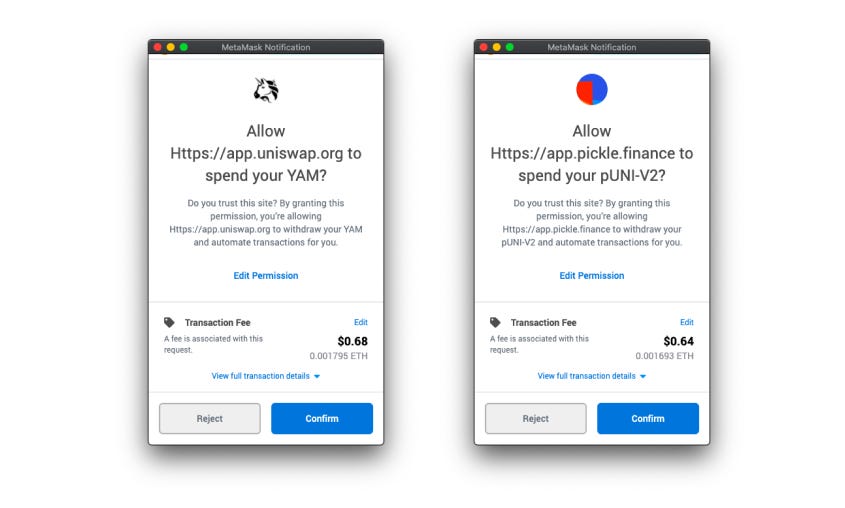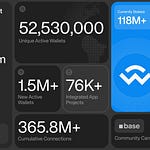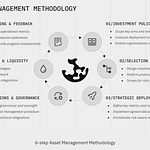Hi Fintech Futurists —
Welcome back to our podcast series! For those that want to subscribe in your app of choice, you can now find us at Apple, Spotify, or on RSS.
In this conversation, we chat with Nassim Eddequiouaq and Riyaz Faizullabhoy - Co-Founders of Bastion. Bastion helps companies seamlessly integrate web3 infrastructure into enterprise technologies through a compliant, white-label platform. The Bastion platform focuses on three core pillars: ownership & monetization of digital goods, smart transaction routing, and customer analytics.
Nas and Riyaz have a long, successful history of working closely together – they’ve been at it for over seven years. Nas and Riyaz first worked together at Docker, which has since become a developer favorite for accelerating the time to launch consistent, secure, and reliable applications.
They later moved to Anchorage Digital, where, as founding engineers, they worked to build the hardware-backed private key storage platform that would eventually become the technology underpinning the first federally chartered crypto bank. Sometime later, they designed and spearheaded wallet infrastructure and custody at Meta’s cryptocurrency wallet, Novi.
Most recently, Nass and Riyaz worked at Andreessen Horowitz as CTO and CISO at a16z crypto. Bastion's $25 million seed funding round received significant backing from a16z Crypto, indicating a strong vote of confidence in their venture. Arianna Simpson, General Partner at a16z Crypto, emphasized the importance of secure custodial wallet infrastructure for NFTs and tokens in the Web3 space, a need Bastion is striving to fulfill.
Topics: crypto, payments, custody, Web3, Web2, cybersecurity, decentralization, wallets, user experience, security
Tags: Bastion, Libra, Meta, Andreessen Horowitz, a16z, Docker, Anchorage Digital, Facebook
👑See related coverage👑
DeFi: Blackbird brings crypto to the culinary world; Membrane Labs, a hedge fund-focused crypto trading platform, secures $20MM
[PREMIUM]: Long Take: Growing financial engagement with messaging in Coinbase Wallet, Venmo, and the super apps
[PREMIUM]: Long Take: The creative remains of Facebook Libra -- US CBDC, Silvergate's stables, Mysten, Aptos, 0L Network, and Meta's wallet
Timestamp
1’13”: From digital security to working on Facebook’s Libra project: The journey of Riyaz and Nas
7’09”: The Rationality of Digital Adversaries: A Look at Cybersecurity Challenges
9’45”: The Convergence of Decentralization and Corporate Ambitions: A Deep Dive into the Libra Project
16’52”: From Operator to Investor: Navigating the Crypto Space at Andreessen Horowitz
21’50”: Unlocking Crypto Security: The Mission of Bastion and its Innovative Approach
27’48”: Empowering Developers: How Bastion Fits into the Crypto Infrastructure Ecosystem
32’40”: Simplifying User Interactions: The Role of Bastion in Crypto Transactions and custody
38’51”: Data and the Future: Navigating the Possibilities of Web 3 Custodianship
41’02”: The channels used to connect with Riyaz and Nas & learn more about Bastion
Fintech Meetup Delivers Results! Fintech Meetup (March 3-6) is the best place to find new business, partnerships and opportunities. Attendees & sponsors say Fintech Meetup is “the highest ROI event” with reasonably priced sponsorships, tickets, and rooms. Meet everyone for any reason across every use case over 45,000+ double opt-in meetings, and Network with 5,000+ attendees.
Sneak Peek:
Riyaz Faizullabhoy:
…the way we think about Bastion really philosophically, we knew from looking at the space that there was more than just key management that was blocking these great products from being built. At this point, we really think that spinning up, creating wallets, creating keys is already, if not it will become, a commodity. But even then, it doesn't really get you past the starting line. What can you do with those keys long-term? What can you build for experiences? We think about Bastion today as a platform with three main pillars. First pillar we'll dig into it is custodial wallet API. We pick custodial. We've built custodial a few times over and really, really believe it brings the best user experience to the product that gets built on top. A couple of quick examples where it gets illustrated is, firstly, when it comes to key recovery with custodial wallets, users don't have to think about seed phrases.They don't have to understand encrypted MPC shards. It really becomes as simple as a forgot password button that you're used to today because we are at the custodian, we're holding the key securely on our systems, it's our responsibility to always keep it and not lose it, and so you can recover it. Another area, an example where custodial really shines, and I'm sure everyone on this call has probably had this experience where you're going to do some interaction with your wallet and you're clicking seven times on the popup that comes up on your Chrome browser or whatever browser you're using, whatever wallet, because you're individually approving every single on chain transaction. You don't even know what half of them are, because there might be some bridging or some other approval, that is not incredibly clear to use the user. You're seeing hex strings and just bytes of data.
With custodial, we can abstract that into a single API call, into really thinking about for our customers, our businesses that we work with, how do we give them dead simple APIs that make it as a product, a user journey or a product flow as opposed to thinking through every single on chain transaction and exposing all those details that quite frankly we believe that most people shouldn't even have to know about.
Nassim Eddequiouaq:
Double-clicking on the user journey, I think that everyone starts somewhere and the best majority of the people on earth are going to start in traditional Web 2. The vast majority of their lives online revolve around, whether that's a TikTok, an Instagram, Hulu, Venmo, whatever the case might be, this is the bar for adoption. Anything that has more friction than that is not going to get adoption. Our goal is really let's build the best onboarding, and oftentimes the best onboarding is just no onboarding at all, and custodial wallets essentially enable that, and then let's build a user journey for them. As part of our platform, we definitely understand that at some point people are going to graduate essentially into self-custody. This is also something that we're including as part of our platform, the ability to…
If you would like to access the full transcript, subscribe below.
Shape Your Future
Wondering what’s shaping the future of Fintech and DeFi?
At the Fintech Blueprint, we go down the rabbit hole in the DeFi and Fintech world to help you make better investment decisions, innovate and compete in the industry.
Sign up to the Premium Fintech Blueprint newsletter and get access to:
Blueprint Short Takes, with weekly coverage of the latest Fintech and DeFi news via expert curation and in-depth analysis
Web3 Short Takes, with weekly analysis of developments in the crypto space, including digital assets, DAOs, NFTs, and institutional adoption
Full Library of Long Takes on Fintech and Web3 topics with a deep, comprehensive, and insightful analysis without shilling or marketing narratives
Digital Wealth, a weekly aggregation of digital investing, asset management, and wealthtech news
Access to Podcasts, with industry insiders along with annotated transcripts
Full Access to the Fintech Blueprint Archive, covering consumer fintech, institutional fintech, crypto/blockchain, artificial intelligence, and AR/VR
Read our Disclaimer here — this newsletter does not provide investment advice and represents solely the views and opinions of FINTECH BLUEPRINT LTD.
Want to discuss? Stop by our Discord and reach out here with questions


